Notes
- ↑ "Charles William Romeyn]," Brief Biographies of American Architects Who Died Between 1897 and 1947, Society of Architectural Historians.
Charles William Romeyn (died February 5, 1942) was a prominent American architect. In partnership with Henry R. Wynne he designed many buildings in New York City. The Prasada (1905-07) on Central Park West is considered to be his most famous work that still stands to this day. He was a member of the Architectural League of New York. [1]

Philip Cortelyou Johnson was an American architect best known for his works of modern and postmodern architecture. Among his best known designs are his modernist Glass House in New Canaan, Connecticut, and postmodern 550 Madison Avenue in New York, designed for AT&T, and 190 South La Salle Street in Chicago.

The Greek Revival was an architectural movement of the late 18th and early 19th centuries, predominantly in Northern Europe and the United States. It revived the style of ancient Greek architecture, in particular the Greek temple, with varying degrees of thoroughness and consistency. A product of Hellenism, it may be looked upon as the last phase in the development of Neoclassical architecture, which had for long mainly drawn from Roman architecture. The term was first used by Charles Robert Cockerell in a lecture he gave as Professor of Architecture to the Royal Academy of Arts, London in 1842.

Charles Follen McKim was an American Beaux-Arts architect of the late 19th century. Along with William Rutherford Mead and Stanford White, he provided the architectural expertise as a member of the partnership McKim, Mead & White.
The year 1898 in architecture involved some significant architectural events and new buildings.
Charles Willard Moore was an American architect, educator, writer, Fellow of the American Institute of Architects, and winner of the AIA Gold Medal in 1991. He is often labeled as the father of postmodernism. His work as an educator was important to a generation of American architects who read his books or studied with him at one of the several universities where he taught.
John Romeyn Brodhead was an American historical scholar. During his service in the diplomatic corps, he transcribed many rare documents related to the colonial history of New York.

Collegiate Gothic is an architectural style subgenre of Gothic Revival architecture, popular in the late-19th and early-20th centuries for college and high school buildings in the United States and Canada, and to a certain extent Europe. A form of historicist architecture, it took its inspiration from English Tudor and Gothic buildings. It has returned in the 21st century in the form of prominent new buildings at schools and universities including Princeton and Yale.

William Rutherford Mead was an American architect who was the "Center of the Office" of McKim, Mead, and White, a noted Gilded Age architectural firm. The firm's other founding partners were Charles Follen McKim (1847–1909), and Stanford White (1853–1906).

César Pelli was an Argentine-American architect who designed some of the world's tallest buildings and other major urban landmarks. Two of his most notable buildings are the Petronas Towers in Kuala Lumpur and the World Financial Center in New York City. The American Institute of Architects named him one of the ten most influential living American architects in 1991 and awarded him the AIA Gold Medal in 1995. In 2008, the Council on Tall Buildings and Urban Habitat presented him with The Lynn S. Beedle Lifetime Achievement Award.
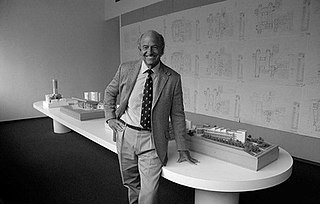
Charles Gwathmey was an American architect. He was a principal at Gwathmey Siegel & Associates Architects, as well as one of the five architects identified as The New York Five in 1969. Gwathmey was perhaps best known for the 1992 renovation of Frank Lloyd Wright's Guggenheim Museum in New York City.

McKim, Mead & White was an American architectural firm that came to define architectural practice, urbanism, and the ideals of the American Renaissance in fin de siècle New York. The firm's founding partners Charles Follen McKim (1847–1909), William Rutherford Mead (1846–1928) and Stanford White (1853–1906) were giants in the architecture of their time, and remain important as innovators and leaders in the development of modern architecture worldwide. They formed a school of classically trained, technologically skilled designers who practiced well into the mid-twentieth century. According to Robert A. M. Stern, only Frank Lloyd Wright was more important to the identity and character of modern American architecture.
James Gallier was a prominent 19th-century New Orleans architect.
Charles Alonzo Rich was an American architect who practiced in New York City from 1882 until 1933. Rich was a member of the Architectural League of New York. Rich was a partner in the New York architectural firm of Lamb & Rich, that mostly specialized in residential design.
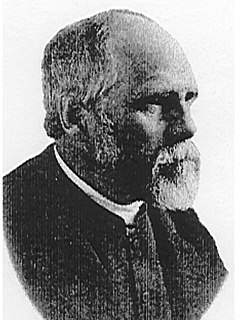
Charles Babcock was an American architect, academic, Episcopal priest and founding member of the American Institute of Architects.
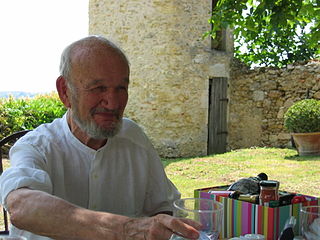
Norval Crawford White was an American architect, architectural historian and professor. He designed buildings throughout the U.S., but he is best known for his writing, particularly the AIA Guide to New York City. White was widely considered to be one of the great figures of New York architecture.
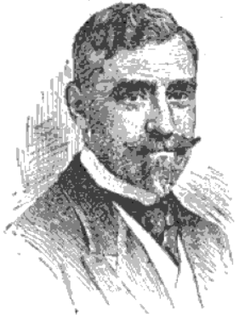
Emmanuel Louis Masqueray (1861–1917) was a Franco-American preeminent figure in the history of American architecture, both as a gifted designer of landmark buildings and as an influential teacher of the profession of architecture dedicated to the principles of Beaux-Arts architecture.

Edward Brodhead Green, very often referred to as E. B. Green, was a major American architect from New York State.
Charles Annesley Romeyn was an American football player and United States Army officer. He played for the Army Black Knights football team and was selected as a consensus first-team fullback on the 1898 College Football All-America Team.
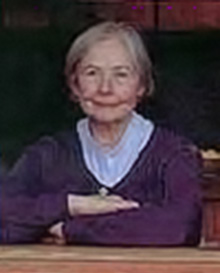
Elizabeth Cadbury-Brown was an American-born architect. She moved to London in 1948 and from then on worked mostly with H. T. Cadbury-Brown, her husband and professional partner.
Romeyn is a Dutch given name and surname. Among variant forms are Romeijn, Romein, Romijn and Romyn, each pronounced [roˈmɛi̯n] in Dutch. Romein means "Roman", and the given name could be considered cognate to Romeo. The surname's origin may thus be patronymic or toponymic, indicating someone from Rome. Sometimes the name is a spelling change from Remein, which started as a patronymic based on the given name Remy / Remigius. Notable people with the name include: